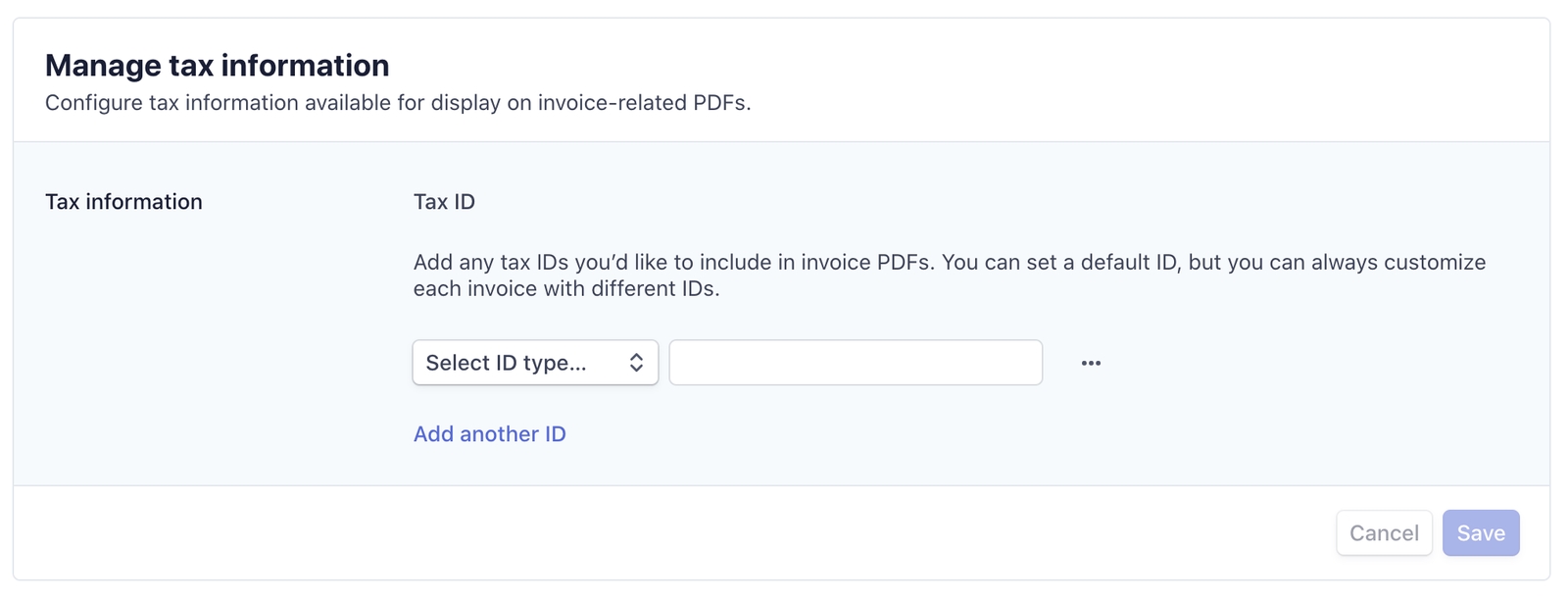Home>Finance>Why Is There A Spousal Surcharge For Health Insurance?


Finance
Why Is There A Spousal Surcharge For Health Insurance?
Published: October 30, 2023
Discover the reasons behind the spousal surcharge for health insurance. Learn how it impacts your finances and find strategies to navigate this cost.
(Many of the links in this article redirect to a specific reviewed product. Your purchase of these products through affiliate links helps to generate commission for LiveWell, at no extra cost. Learn more)
Table of Contents
- Introduction
- What is a spousal surcharge for health insurance?
- Reasons for implementing a spousal surcharge
- Economic implications of spousal surcharges
- Impact on coverage and enrollment
- Legal considerations and limitations
- Employer approaches and strategies
- Employee reactions and implications
- Alternatives to spousal surcharges
- Conclusion
Introduction
Health insurance is an essential component of financial security, providing coverage for medical expenses and ensuring access to quality healthcare. Many employers offer health insurance benefits to their employees as part of their compensation package. However, in recent years, the implementation of a spousal surcharge for health insurance has become increasingly prevalent.
A spousal surcharge is an additional fee imposed by employers on employees who choose to include their spouse on their health insurance plan when the spouse has access to their own employer-sponsored health insurance coverage. The surcharge can range from a few hundred dollars to several thousand dollars per year and is meant to offset the cost of healthcare expenses for spouses who have the option of obtaining coverage through their own employer.
The inclusion of a spousal surcharge in health insurance plans has sparked debate and controversy. On one hand, employers argue that it is a necessary measure to control rising healthcare costs and encourage spouses to enroll in their own employer-sponsored plans. On the other hand, critics argue that it unfairly penalizes spouses and undermines the concept of family coverage.
In this article, we will explore the reasons behind the implementation of spousal surcharges, examine their economic implications, discuss the impact on coverage and enrollment, consider the legal considerations and limitations, delve into employer approaches and strategies, explore employee reactions and implications, and discuss alternatives to spousal surcharges.
By understanding the motivations and consequences of implementing a spousal surcharge for health insurance, both employers and employees can make informed decisions regarding their healthcare coverage.
What is a spousal surcharge for health insurance?
A spousal surcharge for health insurance is an additional fee imposed by employers on employees who choose to include their spouse on their health insurance plan when the spouse has access to their own employer-sponsored health insurance coverage. It is a way for employers to address the increased costs associated with covering spouses who have the option of obtaining coverage through their own employer.
The reasoning behind implementing a spousal surcharge is that when both spouses have access to employer-sponsored health insurance, it can result in “dual coverage,” where both plans are utilized independently for healthcare services. This can lead to increased healthcare costs for the employer, as duplicate claims and overlapping coverage can drive up expenses.
By imposing a spousal surcharge, employers are aiming to incentivize spouses to enroll in their own employer-sponsored health insurance plans, rather than relying on coverage through their spouse’s plan. The surcharge acts as a deterrent, making it less financially appealing for spouses to choose coverage under their partner’s plan when they have an option of their own.
It’s important to note that not all employers implement spousal surcharges, and the criteria for imposing such fees can vary. Some employers may impose the surcharge only if the spouse has access to employer-sponsored coverage, while others may require proof that the spouse’s coverage is comparable to the employer’s plan. The specific details concerning the surcharge, including the amount and eligibility criteria, are typically outlined in the employer’s health insurance plan documents.
A spousal surcharge is different from other types of premiums or contributions that employees may be required to pay for their health insurance. It specifically targets spouses who have access to their own employer coverage, distinguishing them from other dependents, such as children or non-working spouses.
Next, we will explore the reasons behind the implementation of spousal surcharges and evaluate the economic implications of this practice.
Reasons for implementing a spousal surcharge
The implementation of a spousal surcharge for health insurance is driven by several key reasons. Employers who choose to impose this additional fee have distinct motivations that revolve around financial considerations, equity in healthcare coverage, and cost control measures.
1. Cost control: One of the primary reasons for implementing a spousal surcharge is to control the rising costs of providing health insurance coverage to employees and their dependents. When both spouses have access to employer-sponsored coverage, it can result in duplicate claims, overlapping coverage, and increased healthcare expenses for the employer. By imposing a surcharge, employers aim to reduce the likelihood of dual coverage and encourage spouses to enroll in their own employer-sponsored plans instead.
2. Equity and fairness: Another reason for implementing a spousal surcharge is to promote fairness and equity among employees. When some employees choose to include their spouse on their health insurance plan while others do not, it can create an imbalance in the cost-sharing burden. Imposing a surcharge helps distribute the costs more evenly among employees and their dependents, ensuring that those who have the option of obtaining coverage through their own employer contribute their fair share.
3. Encouraging enrollment in employer-sponsored plans: By imposing a spousal surcharge, employers aim to incentivize spouses to enroll in their own employer-sponsored health insurance plans. It is seen as a way to encourage responsible decision-making regarding healthcare coverage and discourage individuals from opting for the most financially advantageous option without considering the potential impact on costs for both the employer and other employees.
4. Managing financial resources: Employers have a finite budget allocated for employee benefits, including health insurance. By implementing a spousal surcharge, employers can better allocate their financial resources by ensuring that the costs associated with healthcare coverage are distributed appropriately. This allows employers to optimize their benefit offerings while staying within their budgetary constraints.
It’s important to note that while employers have valid reasons for implementing spousal surcharges, this practice is not without controversy. Critics argue that it unfairly penalizes spouses and may discourage individuals from seeking necessary healthcare due to financial constraints. The economic implications of spousal surcharges will be discussed in the next section.
Economic implications of spousal surcharges
The implementation of a spousal surcharge for health insurance can have significant economic implications for both employers and employees. Understanding these implications is crucial for assessing the effectiveness and fairness of this practice.
1. Cost savings for employers: The primary economic benefit of implementing a spousal surcharge is cost savings for employers. By discouraging spouses from enrolling in their partner’s health insurance plan, employers can reduce the number of duplicate claims and overlapping coverage, ultimately lowering their healthcare expenses. This cost savings can be significant, especially for employers with a large workforce and a higher number of employees with access to employer-sponsored coverage for their spouse.
2. Increased employee contributions: Spousal surcharges place a financial burden on employees who choose to include their spouse on their health insurance plan. These additional fees can increase the out-of-pocket expenses for employees, reducing their take-home pay and potentially impacting their overall financial well-being. Employees may need to reevaluate their budget and financial priorities in light of the added expense.
3. Potential coverage gaps: Another economic implication of spousal surcharges is the possibility of coverage gaps for spouses who are deterred from enrolling in their partner’s health insurance plan due to the financial burden. If the spouse’s employer does not offer adequate or affordable health insurance coverage, they may be left without suitable health insurance options. This can result in increased healthcare costs and financial vulnerability for the spouse without coverage.
4. Shift in healthcare decision-making: Spousal surcharges can influence healthcare decision-making for employees and their spouses. The financial implications of the surcharge may lead individuals to prioritize cost over their actual healthcare needs. This could result in individuals forgoing necessary medical treatments or delaying preventive care, potentially leading to more significant health issues in the long run.
5. Impact on employee satisfaction and retention: The economic implications of spousal surcharges can have implications for employee satisfaction and retention. Employees who are subject to these additional fees may feel financially burdened and may perceive the surcharge as unfair treatment. This could impact their level of job satisfaction and potentially lead to higher turnover rates as employees seek employment opportunities with more favorable health insurance benefits.
It is important for employers to carefully consider the economic implications of implementing spousal surcharges and assess the potential impact on their workforce. Open communication and transparency about the reasons behind the surcharge can help mitigate potential grievances and allow employees to make informed decisions regarding their healthcare coverage.
Impact on coverage and enrollment
The implementation of a spousal surcharge for health insurance can have a significant impact on coverage and enrollment patterns among employees and their spouses. Understanding these effects is crucial for both employers and employees when evaluating the effectiveness and consequences of this practice.
1. Decreased spousal enrollment: The primary impact of spousal surcharges is a decrease in the number of spouses enrolling in their partner’s health insurance plan. The financial burden imposed by the surcharge serves as a deterrent for spouses who have access to their own employer-sponsored health insurance coverage. Instead, they may opt to enroll in their own employer’s plan, seek coverage through other means, or remain uninsured if no viable options are available. This can result in a decrease in the overall number of spouses covered under the employer’s health insurance plan.
2. Potential coverage gaps for spouses: The decreased enrollment of spouses due to spousal surcharges may lead to coverage gaps for those who are unable to secure alternative health insurance coverage. If the spouse’s employer does not offer adequate or affordable health insurance options, the surcharge may create significant barriers to obtaining necessary healthcare coverage. This can leave spouses exposed to financial risk and potentially limit their access to essential medical services.
3. Impact on family coverage: Spousal surcharges can also impact family coverage options. When spouses are deterred from enrolling in their partner’s health insurance plan due to the surcharge, it may lead to a reevaluation of family coverage decisions. Families may opt for separate health insurance plans for each spouse or explore alternative coverage options, depending on the affordability and availability of healthcare plans. This can result in fragmented coverage for families and increased complexity in managing healthcare benefits.
4. Changes in dependent eligibility: To address the issues arising from spousal surcharges, some employers have implemented changes to dependent eligibility criteria. This may include stricter guidelines for spousal eligibility, requiring proof that the spouse’s employer-sponsored coverage is not comparable or is not of sufficient quality. By doing so, employers aim to ensure that the spousal surcharge is only imposed when no viable alternative health insurance options are available for the spouse.
5. Impact on overall coverage rates: The implementation of spousal surcharges may have implications for the overall coverage rates within an organization. While it can reduce healthcare costs for employers by discouraging dual coverage, it may also result in a decrease in the number of individuals covered under the employer’s health insurance plan. This can lead to changes in the employer’s risk pool and potentially impact premium rates for employees who choose to maintain coverage for themselves and other dependents.
In summary, spousal surcharges can have a significant impact on coverage and enrollment patterns, potentially leading to decreased spousal enrollment, coverage gaps for spouses, changes in family coverage decisions, adjustments to dependent eligibility criteria, and overall changes in coverage rates. Employers and employees should carefully consider these impacts when evaluating the implementation of spousal surcharges.
Legal considerations and limitations
When implementing a spousal surcharge for health insurance, employers must navigate certain legal considerations and limitations. These factors ensure that the implementation of such surcharges complies with applicable regulations and does not infringe upon the rights of employees and their spouses.
1. Equal Employment Opportunity Laws: Employers need to be mindful of Equal Employment Opportunity (EEO) laws when implementing spousal surcharges. The EEO laws prohibit discrimination based on various factors, including marital status. Employers must ensure that the surcharge is applied uniformly and does not disproportionately affect any specific group, such as married individuals or individuals with dependents.
2. The Affordable Care Act (ACA): The Affordable Care Act introduced various provisions that impact employer-sponsored health insurance plans. Under the ACA, employers with 50 or more full-time equivalent employees are subject to the employer shared responsibility provisions. However, the ACA does not specifically address spousal surcharges. Employers should consult legal counsel or benefits experts to ensure compliance with the ACA requirements while implementing spousal surcharges.
3. State Laws and Regulations: Employers must also consider state-specific laws and regulations that may impact the implementation of spousal surcharges. Some states have specific laws that govern the eligibility requirements for spousal coverage or limit the amount of additional fees that can be charged. Employers should familiarize themselves with these state laws and regulations to ensure compliance.
4. Collective Bargaining Agreements: Employers with unionized workforces need to consider any provisions related to health insurance coverage and additional fees outlined in collective bargaining agreements. These agreements may have specific restrictions or requirements regarding the implementation of spousal surcharges. Employers must adhere to the terms of these agreements and engage in discussions with union representatives as necessary.
5. Anticipated Legal Challenges: It’s important to recognize that the implementation of spousal surcharges may face legal challenges. Employees or their spouses may contest the surcharge on the grounds of fairness, discrimination, or violation of contract terms. Employers must be prepared to address any potential legal challenges and be able to justify the implementation of the surcharge based on valid business reasons.
It is vital for employers to consult legal counsel or benefits experts to ensure compliance with applicable laws and regulations when implementing spousal surcharges. By doing so, employers can navigate the legal considerations and limitations to minimize legal risks and ensure that their actions align with legal requirements and employee rights.
Employer approaches and strategies
Employers have adopted various approaches and strategies when implementing spousal surcharges for health insurance coverage. These approaches aim to strike a balance between controlling healthcare costs and ensuring fair and equitable coverage for employees and their spouses.
1. Implementing a tiered surcharge system: Some employers have opted for a tiered surcharge system based on the availability of other employer-sponsored health insurance coverage for spouses. For example, a lower surcharge may be applied if the spouse’s employer does not offer health insurance coverage, or if the coverage is deemed inadequate or unaffordable. This helps encourage spousal enrollment in their own employer-sponsored plans while still recognizing that not all spouses have access to suitable alternatives.
2. Providing alternative coverage options: Employers may offer alternative coverage options for spouses who are subject to the surcharge. This can include providing access to a separate plan specifically designed for spouses or offering a premium subsidy to help offset the financial burden. These alternatives help address the concerns of spousal coverage gaps and ensure that spouses have access to suitable healthcare options.
3. Engaging in cost-sharing arrangements: Employers may engage in cost-sharing arrangements with employees to minimize the financial impact of spousal surcharges. This can involve discussions with employees and their spouses to determine a fair and manageable contribution arrangement that takes into account the financial circumstances of the couple. Cost-sharing can help alleviate some of the burden placed on employees while still encouraging responsible healthcare decision-making.
4. Providing education and resources: Employers can offer education and resources to employees and their spouses regarding the impact of spousal surcharges and the available healthcare alternatives. This can involve hosting informational sessions, providing access to educational materials, or offering guidance through benefit specialists. By increasing awareness and understanding, employers can help employees and their spouses make informed decisions regarding their healthcare coverage.
5. Engaging in open communication: Employers can foster open communication with employees about the reasons behind the implementation of spousal surcharges and the associated cost implications. Transparent communication helps employees understand the motivations and challenges faced by the employer and can alleviate concerns or perceived unfair treatment. Employers should be receptive to employee feedback and consider adjustments to the surcharge approach based on employee input.
Employers should carefully evaluate their specific workforce demographics, budget constraints, and legal considerations when determining the most appropriate approach to implementing spousal surcharges. By considering the unique needs of their employees and adopting thoughtful strategies, employers can successfully manage healthcare costs while promoting fair and equitable coverage for both employees and their spouses.
Employee reactions and implications
The implementation of spousal surcharges for health insurance can have significant implications for employees and their families. It is important to consider their reactions and the potential consequences of such a policy for employee morale, financial well-being, and overall job satisfaction.
1. Financial impact: One of the primary concerns for employees is the financial impact of spousal surcharges. These additional fees can increase the out-of-pocket expenses for employees who choose to include their spouse on their health insurance plan. Employees may need to adjust their budget and make difficult decisions regarding their healthcare coverage. The financial burden can lead to added stress and potentially impact an employee’s overall financial well-being.
2. Perception of unfairness: Employees may perceive spousal surcharges as unfair treatment, particularly if they believe it penalizes spouses who have access to their own employer-sponsored coverage. Employees who do not have the option of enrolling their spouse in their employer’s plan may view the surcharge as inequitable, as it disproportionately affects their financial situation. This perception of unfairness can negatively impact employee morale and job satisfaction.
3. Impact on family coverage decisions: Spousal surcharges can influence the decisions employees make regarding family coverage. Employees may be more likely to consider separate health insurance plans for themselves and their spouse to avoid the surcharge. This fragmentation of coverage can complicate healthcare administration and potentially increase overall healthcare costs for the family.
4. Employee retention and attraction: The implementation of spousal surcharges can have implications for employee retention and attraction. Employees who face significant financial strain due to the surcharge may seek employment opportunities with more favorable health insurance benefits. Likewise, potential job applicants may be dissuaded from accepting job offers that include spousal surcharges, especially if they have access to alternative employers without such policies.
5. Health and healthcare decision-making: Spousal surcharges can influence how employees and their spouses make healthcare decisions. The financial implications may cause individuals to delay or forgo necessary medical treatments, preventive care, or other healthcare services. This can have long-term impacts on the health and well-being of both employees and their spouses.
Employers should be mindful of these employee reactions and consider strategies to mitigate any negative implications. This can include clear and transparent communication about the reasons behind the surcharge, providing resources and education to help employees navigate healthcare options, and exploring alternatives such as cost-sharing arrangements or supplemental coverage options. By addressing employee concerns and fostering a supportive work environment, employers can help alleviate the potential negative impacts of spousal surcharges.
Alternatives to spousal surcharges
Employers have several alternatives to spousal surcharges that can help control healthcare costs while still providing options for spousal coverage. These alternatives aim to address the concerns of employers regarding duplicate coverage and cost control, while also ensuring that employees and their spouses have access to affordable and quality healthcare options. Here are some alternatives to consider:
1. Spousal opt-out provision: Instead of imposing a surcharge, employers can offer a spousal opt-out provision where employees have the option to exclude their spouse from their health insurance plan. This allows employees to assess their individual needs and determine the most cost-effective option for their family. By giving employees the choice, it puts the decision-making power in their hands while still allowing them to maintain coverage for their spouse if desired.
2. Carve-out coverage: Employers may offer a separate plan specifically designed for spouses, commonly referred to as “carve-out” coverage. This allows spouses to have access to healthcare coverage separate from the employee’s plan, addressing the concerns of duplicate coverage while still providing affordable options for spouses. Carve-out coverage can also be customized to meet the unique needs of spouses, potentially resulting in lower costs compared to traditional family coverage.
3. Premium-sharing arrangements: Employers can explore premium-sharing arrangements where employees and their spouses share the cost of coverage. This approach allows both parties to contribute towards the premium, thereby reducing the financial burden on the employee alone. By sharing the cost, it helps promote equitable cost-sharing and ensures that the financial impact is distributed between the employee and their spouse.
4. Financial incentives for spouse’s employer-sponsored coverage: Employers can provide financial incentives to encourage spouses who have access to employer-sponsored coverage to enroll in their own plan. This can include premium subsidies, reimbursement programs, or other incentives to make the spouse’s employer-sponsored coverage more appealing. By incentivizing enrollment in the spouse’s plan, it reduces the likelihood of duplicate coverage and can help control healthcare costs for the employer.
5. Enhanced education and support: Employers can enhance education and support for employees and their spouses to navigate healthcare options and make informed decisions. This can include providing resources, assistance in comparing plans, and access to benefits advisors who can help explore the various coverage options available. By empowering employees and their spouses with knowledge and support, they can make decisions that best fit their individual circumstances.
It’s important for employers to assess the unique needs and dynamics of their workforce when considering alternatives to spousal surcharges. By evaluating available options and tailoring the approach to their specific situation, employers can strike a balance between cost control and providing valuable healthcare coverage for employees and their spouses.
Conclusion
The implementation of spousal surcharges for health insurance is a complex and multifaceted issue. Employers face the challenge of balancing the need to control healthcare costs with providing fair and equitable coverage options for employees and their spouses. While spousal surcharges can help address the issue of duplicate coverage and cost control, they also come with implications for employees and their families.
It is essential for employers to carefully consider the economic implications, employee reactions, and legal considerations associated with spousal surcharges. Open communication, transparency, and alternatives to surcharges can help mitigate potential negative effects and foster a positive work environment.
Employers should explore alternative approaches such as spousal opt-out provisions, carve-out coverage, premium-sharing arrangements, financial incentives for spouse’s coverage, and enhanced education and support. By considering these alternatives, employers can strike a balance between controlling healthcare costs and ensuring that employees and their spouses have access to affordable and quality healthcare options.
Ultimately, the goal is to create a healthcare benefits package that promotes fairness, encourages responsible decision-making, and meets the needs of both employers and employees. It is crucial for employers to evaluate their specific workforce demographics, budget considerations, and legal requirements when making decisions regarding spousal coverage.
As the landscape of healthcare and employee benefits continues to evolve, employers must stay informed about best practices and emerging trends in order to make informed decisions that benefit both their organization and their workforce.
By carefully considering the reasons behind the implementation of spousal surcharges, the economic implications, the impact on coverage and enrollment, the relevant legal considerations, and exploring alternative strategies, employers can navigate this complex issue and create a healthcare benefits program that balances cost control and fairness, while meeting the needs of employees and their families.














